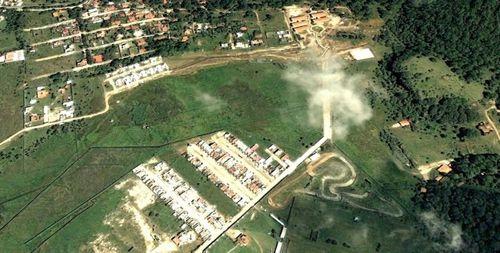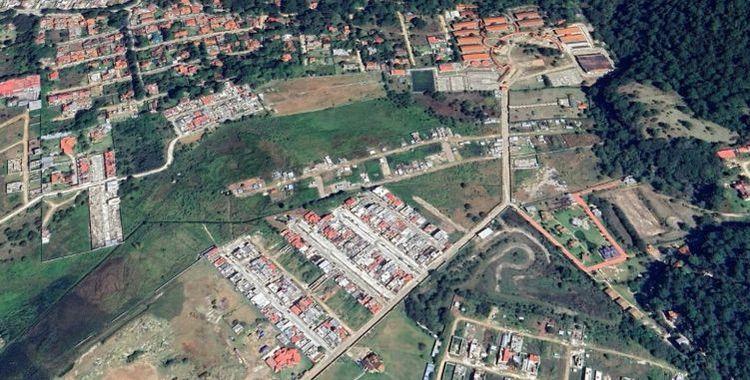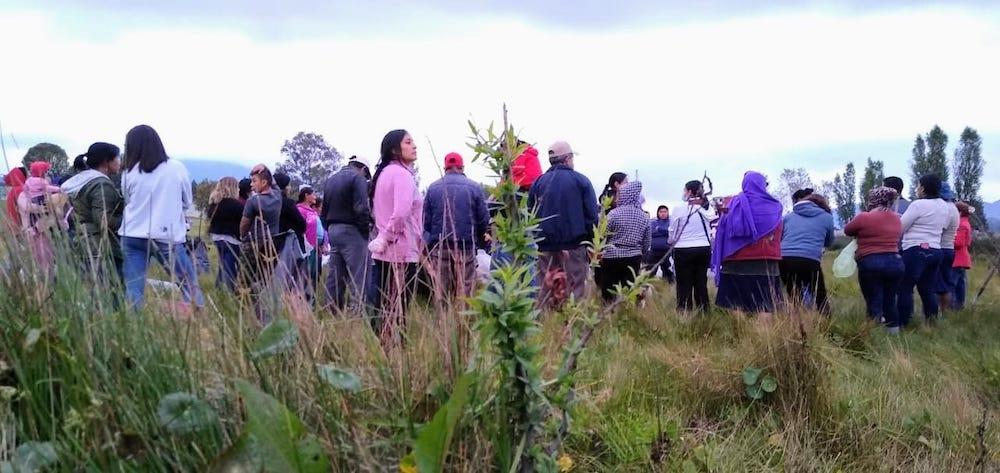On April 14, the head of the Secretariat of Environment and Natural Resources (Semarnat), María Luisa Albores, visited the vicinity of the María Eugenia wetland, located in San Cristóbal de las Casas, Chiapas, to learn about the conditions of the area.
His arrival was not well received. People who occupy properties in this Protected Natural Area (ANP), decreed in 2011, responded with stones and sticks.
León Enrique Ávila, an activist and academic at the Intercultural University of Chiapas, was beaten, he told Journalism CN.
There is a state of ungovernability that threatens the María Eugenia wetland, the main source of water for domestic use in the city of more than 200,000 inhabitants.
Land invasions, which have accelerated since 2018, real estate pressure and the legal uncertainty of its protection are the three issues that most concern environmentalists fighting to protect this area, explained Rodrigo Hess, coordinator of the Jovel Valley Basin Committee.
Above this valley is the city of San Cristóbal de las Casas, founded in 1528. The Basin also includes the mountainous municipalities of Chamula, Huixtán, Tenejapa and Zinacantán, from which the water that reaches the wetlands comes from, Hess said.
On March 22, 2011, in the 289 edition of the Official Newspaper of Chiapas, the Decree was published declaring the María Eugenia mountain wetlands ANP, with an area of 100 hectares.
The Area Management Program expressly prohibits land use changes, infrastructure construction, communication routes, and any action that modifies water flows.
In February 2012, it was declared a Ramsar site, as it is a wetland of international importance. Recently, in April 2022, a new protection category, such as critical habitat, was added to it by Semarnat.
The wetland is surrounded by urban scrub. Around it there are about 10 housing estates and most of its surface is privately owned.
According to the Management Program, urban growth reached the wetland area in the 1980s, with the creation of new settlements that put strong pressure on them.
These settlements face problems because they are located in naturally flooded areas. However, the intentions to continue using land to build housing have not ceased.
León Ávila explained that in 2015 the first movement in defense of the wetland emerged, after the construction company Peje de Oro began works for the construction of a subdivision, even though the ANP Decree was in force for at least 3 years.
According to the documentation prepared by the Center for Human Rights, in the early morning of April 26 of that year, the signs of the wetland were torn off. A day earlier, they had driven through dump trucks at the entrance.
On May 8, the company's representative, Ricardo Díaz Ochoa, together with a woman who identified herself as a notary public, showed up with trucks full of gravel. There he threatened unhappy neighbors with “throwing the machinery” on them if they didn't let them in.
They also filed criminal complaints against opponents of filling the property, according to the All Rights for All Rights Network (TDT Network).
The company's legal representative, Ricardo Díaz Ochoa, is the brother of the current municipal president of San Cristóbal de las Casas, Mariano Alberto Díaz Ochoa.
“After a lot of mobilization and several weeks of blocking access to materials, we managed to stop this construction company,” Avila said.
However, in 2017 they reoffended and managed to dump a gravel truck in the wetland area. “In that same year they also killed my dog, as a way to frighten me,” added the activist.
By 2020, he says, families began to settle irregularly, in self-built housing, made of wood, cement and sheets.


Credit: Google Earth
From León Ávila's point of view, there is collusion between invasive families and real estate developers seeking to develop the land.
In the place, he said, there is the presence of 'motonets', a crash group that has been characterized by sowing terror in the streets of San Cristóbal de las Casas.
In addition to filling the wetland to settle houses, the human presence causes other problems, since they do not have adequate drainage, so that their waste mixes with the water that is supplied to the population.
Without wetlands there is no water for San Cristóbal
The great importance of conserving this area lies in the fact that it provides 70% of the drinking water that is distributed to the inhabitants of the city of San Cristóbal de las Casas, indicates the justification of the Ramsar decree. It also protects people from flooding by filtering rainwater to groundwater and purifying it.
In addition to the environmental services it provides to the population, endemic species of great ecological importance are distributed in this mountain wetland, such as the endangered Popoyote or pollock fish of San Cristóbal, as well as the Mole of San Cristóbal.
Other endangered species that are distributed in the wetland area are rainbow trout, nauyaca snake, bats, shrews and flying squirrels, all included in the Official Mexican Standard-059-Semarnat-2010.
Rodrigo Hess said that there are other pressures to which the urban wetlands of San Cristóbal de las Casas are subject.
One of these is the lack of a wastewater treatment plant. It has been identified that at least 100 families dump their waste directly into the rivers that cross the city and that at certain points intersect with wetlands.
A study prepared by the organization Pronatura Sur AC identified 33 wetland estates in the valley where the city is located, of which 14 were completely transformed, due to their filling or installation of infrastructure, making their recovery impossible.
Another 11 were altered, meaning that they have partially lost some of their functional, service and environmental characteristics as a result of urban development and other agricultural, livestock and even tourism uses. These are still susceptible to restoration.
In the city, there are only four potential wetlands left to continue providing environmental services to the population: Alborada, La Kisst, Ojo de Agua and María Eugenia.
Jade Biniza Cantú, director of municipal ecology, also recognized that one problem currently faced by wetlands is invasive species of flora and fauna, introduced in the past for commercial reproduction purposes.
According to Roberto Hess, La Kisst is the only urban wetland currently not threatened by real estate pressures in the city, since most of its surface was donated to the City Council by a private individual and is currently managed by the Municipal Drinking Water and Sewerage System (SAPAM).
Although La Kisst is an optimal management model for future conservation, there are still many challenges, said Margarita Gutiérrez, from the organization Cántaro Azul, such as the control of pollution in the yellow river, which runs along the side of the wetland.
For activists, it is urgent that protection policies be applied correctly and in a timely manner, before real estate development and pollution continue to spread to these sites of international relevance for their environmental services.



Comentarios (0)